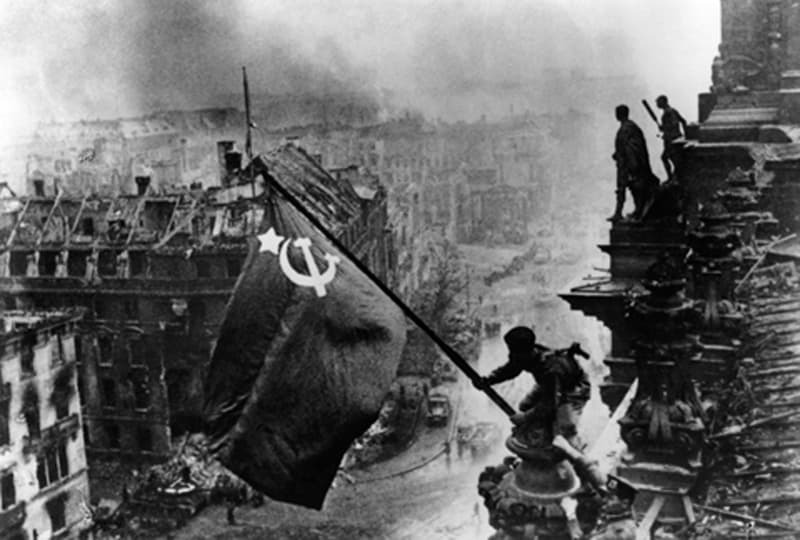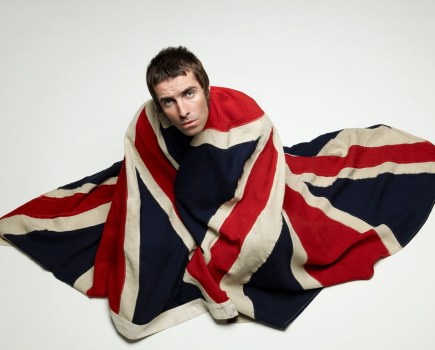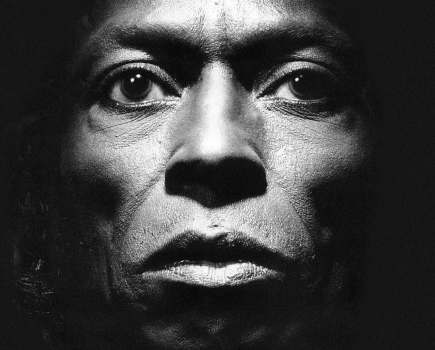Image: Russian soldiers flying the Red Flag, made from
tablecloths, over the Reichstag in Berlin, 2 May 1945 © Photo by Yevgeny
Khaldei/Getty Images
As the Second World War entered its
final phase in early 1945, Ukrainian-born Yevgeny Khaldei was working
as a staff photographer for the Soviet news agency TASS. He was 28 and
had travelled thousands of miles around Europe with the Russian army
since his country entered the war in 1941.
Under Stalin’s rule,
TASS’s news reporting was carefully manipulated to present a positive
image of the nation to the rest of the world. Khaldei, who had worked
for the agency for ten years, had become highly skilled in creating the
required pro-Soviet images.
During the war, his role was to
record the Red Army’s military successes and he shot dramatic images of
major battles, including the Siege of Sevastopol (1941-42) and the
liberation of cities including Sofia, Belgrade and Vienna from Nazi
control.
In 1945, Allied forces were making significant headway
in Europe, and Roosevelt, Churchill and Stalin were already planning how
Germany would be divided after their victory was complete. On 20 April,
the final major battle in Europe began: the Battle of Berlin, in which
the Red Army pressed forward to gain control of the German capital.
Khaldei
documented the Soviet advance against the depleted Nazi forces and,
when it was becoming clear that the German defeat was approaching, he
saw the opportunity to create a photograph that would symbolise it.
A
few months earlier, the American photographer Joe Rosenthal had
captured his iconic image of the US victory in the Pacific, ‘Raising the
Flag on Iwo Jima’. Rosenthal’s picture was a great morale-booster for
the American public and had achieved worldwide fame. Khaldei was
familiar with the image and knew that a similarly important photograph
could be created in the ruins of Berlin.
However, he faced a
practical problem: the Red Army had no flags of a suitable size to make
an impact in a photograph, so, as the battle continued, Khaldei returned
to Moscow to look for some. This search proved difficult in the limited
time available, so he improvised by borrowing three red tablecloths,
reputedly from the TASS agency office. To transform the tablecloths into
flags, Khaldei’s uncle, a tailor, sewed the Soviet hammer, sickle and
star onto the material.
Khaldei flew back to Berlin and
photographed the flags after placing them in prominent positions around
the city – one at an airport in front of a Nazi symbol and another on
top of the Brandenberg Gate. The third was saved for the Reichstag, a
major building that had been constructed in 1894 to house the German
parliament. Although it had fallen into disuse after a fire in 1933, it
had a symbolic significance recognised by both sides.
Fighting to
gain control of the building was fierce, but on 30 April 1945, Red Army
troops gained the upper hand and placed a Soviet flag on the top.
However, there was no photographer present to record the event and, in
any case, it happened at night. A German soldier removed the flag the
next day, but the Soviets achieved complete control of the Reichstag on 2
May.

Image: Another of the many exposures taken by Khaldei
following the capture of the Reichstag building on 2 May 1945 © Yevgeny
Khaldei/Corbis
This was the cue for Khaldei to set up
his picture. He asked some soldier colleagues to hoist the flag on top
of the building with the ruins of Berlin in the background and, with his
Leica, shot several images from different angles. From the 36 exposures
he shot that day, one stood out as having the necessary epic qualities
to encapsulate the German defeat.
It showed a soldier hoisting
the flag on a makeshift flagpole over the edge of the building and an
army colleague standing below. On the right of the frame were ornate
sculptures of German heroic figures, while the background scene showed
Berlin in ruins with smoke rising into the sky. In a later version of
the image, Khaldei printed in some additional dark smoke clouds to
increase the scene’s drama.
Another detail had to be changed
before the image was published. Khaldei hadn’t noticed that the soldier
placed lower in the frame was wearing a watch on each wrist. Khaldei
later recalled the TASS’s editor saying, ‘This is a looter… a true
Soviet soldier does not loot. You fix it quick, take it off the
negative.’ Khaldei accordingly removed the watch on the soldier’s right
wrist.
The photograph was published for the first time in Russian
magazine Ogonyok on 13 May 1945 and subsequently became one of the most
famous and frequently published images to emerge from the Second World
War. Khaldei, who went on to photograph the Nuremberg Trials and later
became a long-serving staff photographer on Soviet newspaper Pravda, was
not credited as the photographer who created the Reichstag image until
the early 1990s. He enjoyed a brief period of international fame before
his death in 1997, aged 80.
Khaldei’s ‘Raising a Flag over the
Reichstag’ (like Rosenthal’s earlier flag-raising image) is part
documentary, part propaganda: a staged reconstruction of an actual
event, arranged for maximum effect by the photographer. Nevertheless,
its strong composition, dramatic content and symbolic significance
combine to make it a truly iconic image.

Image: Yevgeny Khaldei, photographed in Moscow, Russia, c1989 © Yevgeny Khaldei/Corbis
Events of 1945
- 20 January: Franklin D Roosevelt is inaugurated as US President for an unprecedented fourth term
- 27 January: Nazi death camps at Auschwitz and Birkenau are liberated by Soviet forces
- 4 February: The Yalta Conference begins, at which Roosevelt, Churchill and Stalin discuss the reorganisation of Europe after the war
- 13-15 February: The Royal Air Force bombs Dresden in Germany, unleashing a firestorm that kills tens of thousands of people
- 18 March: Berlin is bombed by 1,250 US Air Force bombers
- 12 April: President Roosevelt dies suddenly and is replaced by Harry S Truman
- 30 April: As the Red Army approaches Berlin, Adolf Hitler and his wife Eva Braun commit suicide
- 2 May: Berlin falls into Soviet hands and soldiers hoist the Red Flag over the Reichstag building
- 8 May: The end of the Second World War in Europe is celebrated in V-E Day
- 1 July: The Allied occupation forces divide Germany
- 6 August:
The United States drops an atomic bomb on Hiroshima, Japan. Three days
later, another atomic bomb dropped on Nagasaki leads to the Japanese
surrender on 10 August - 2 September: The Second World War officially ends as the Japanese surrender is accepted by Supreme Allied Commander General Douglas MacArthur
Books and Websites
Books:
The definitive book on Khaldei’s work is Witness to History: The
Photographs of Yevgeny Khaldei, published by Aperture. It is currently
out of print, but both new and second-hand copies are available on www.amazon.co.uk.
Websites: A short biography and some of Khaldei’s images can be seen at www.lumieregallery.net. For a more comprehensive archive of almost 1,300 of Khaldei’s images, visit www.corbisimages.com.







